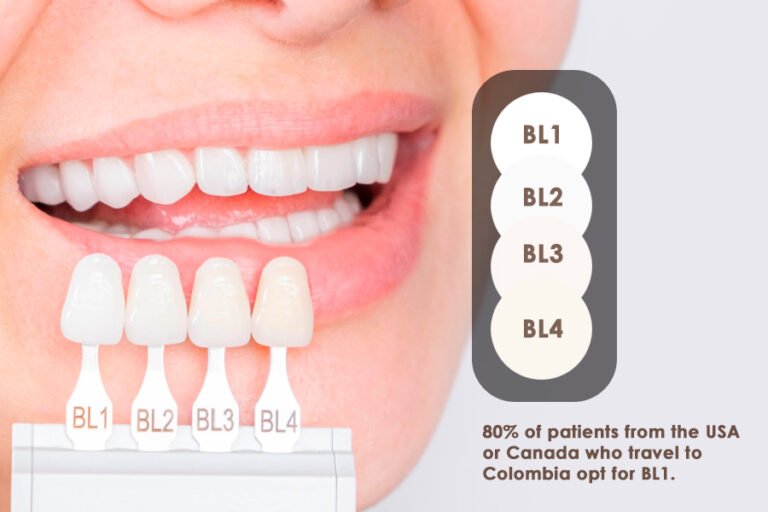Our teeth, like us, vary in shape and color. Dental professionals use shade guides to match the perfect color for teeth whitening and restorations.
The color of your teeth plays a crucial role in your appearance and first impressions, as they are visible when you smile. Bright, white teeth look clean and fresh, while discolored teeth can seem unattractive. Dentists aim to enhance both the health and appearance of your smile.
Since the early 1980s, tooth shade guides have advanced. Today, shades like BL1 and BL2 for porcelain veneers are more popular than the older B1 shades, thanks to modern CEREC technology.
Understanding the Vita Classical Teeth Shade Guide
Teeth color varies due to genetics, environment, and lifestyle, so dentists use shade guides for whitening and cosmetic procedures like crowns, bridges, and veneers. The Vita Shade Guide helps patients choose their desired whitening outcome and see potential results through before-and-after images.
The Vita Enamel Shade B1 offers the brightest teeth shade, regardless of the original color. The guide classifies teeth into four main color categories with sixteen tones:
- A: Reddish brown
- B: Reddish yellow
- C: Grey
- D: Reddish grey
Patients may have shades from these categories or fall within a specific range. For instance, within the A category, shades include A1, A2, A3, and A4. The guide features transition shades for easier matching of individual tooth colors, aiding in selecting the ideal whitening shade.
Dentists use the guide to compare tooth shades from lightest to darkest and may adjust the order for restorations. This tool helps monitor whitening progress and make adjustments to reach the desired shade.
Globally, the Vita Classical Shade Guide is a standard for assessing tooth color and tracking changes during whitening. It’s frequently included in both home whitening kits and professional treatments.
The Rising Trend for Whiter Teeth
People often seek teeth restorations for various reasons, such as repairing damaged teeth, achieving a straighter and whiter smile with veneers, or replacing missing teeth with crowns or bridges. These restorations can differ in shade from natural teeth, leading many to request whiter shades that convey youth and vitality.
In response to this demand, dentists now use the BL shade categories to measure teeth whiteness. Shades BL1, BL2, BL3, and BL4 are commonly used to identify increasingly whiter teeth shades in modern dentistry.
Personal Preferences in Teeth Whitening Outcomes
People have unique initial tooth shades and preferences for whitening. Some are content with gradual whitening from home kits, toothpaste, or gels, while others opt for in-clinic treatments with light activation for immediate results.
While the Vita B1 shade is known for its effectiveness, the outcome of whitening procedures can vary due to different products and dental conditions. Ultimately, individuals select whitening shades to brighten their smiles and boost their attractiveness.
Whitening Options: Smile Zone vs. Full Coverage
A common decision for those concerned about tooth color is whether to whiten only the teeth visible in their smile zone or to ensure all teeth match the chosen shade.
Dentists often provide digital previews of expected whitening results and restorations. Some individuals prefer to match only the smile zone, while others want a uniform look across all teeth.
The choice may also depend on the type of restoration and personal preference. People may want their natural teeth to match their veneers or crowns, and non-matching tones can become a distraction in social interactions. Matching the tooth color helps avoid this issue and boosts confidence.
Cost is another factor. Whitening or restoring more teeth, including with veneers or crowns, can be expensive. Some choose to treat only the smile zone, while others may use dental financing to include more teeth. Similarly, some prefer to restore just their upper teeth, while others opt to have both upper and lower arches treated.





